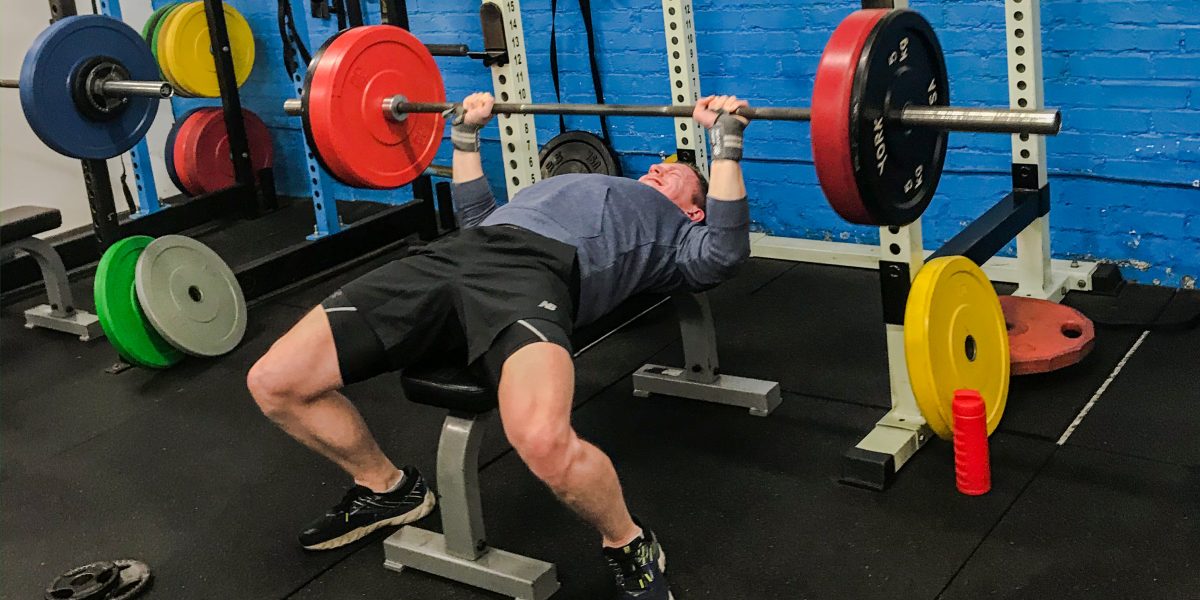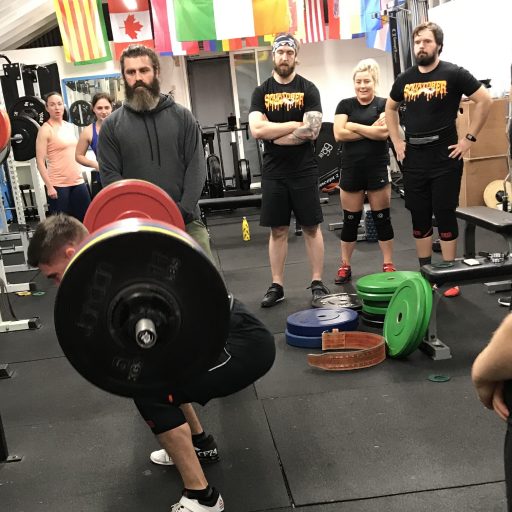
Common Strength Training Errors
Often times when folks are new to strength training, there are a few very common errors that present themselves early on in the process. Strength training in theory is a very simple endeavour but problems start to arise when trainees become impatient. I have learnt the hard way over the years that this type of training demands patience, tempered enthusiasm and consistency – traits that are often lacking in people starting a new training regime. Hopefully this article will help folks to avoid the common pitfalls and set the foundations for a lifetime of productive training. Having said all that, I also believe that people learn best from making mistakes and sometimes we do have to go through them to come out the other side (hopefully unscathed) with more knowledge.
So here are the most common errors that I see when coaching new members through their initial strength sessions…
Not using full range of movement (ROM)
At the start of a session the coach will explain the movements and with the main compound lifts that we train in the gym here (Squat / Bench / Deadlift) all of these movements have a start and finish. It can be common for trainees to decrease the ROM in favour if trying to lift more weight. By using full ROM we are, for the most part, working the target muscle group in a balanced fashion and we are also working on our mobility. Decrease in range can lead to creating imbalances in our training and injuries if we suddenly find ourselves at end range whether it is in sport or performing a physical task (we need to develop range first and then strength in those new ranges) and not to mention plateaus in our training.
Increasing the weight too much session to session (or even within a session)
This happens all of the time (more so with the men than the women!). Frequently guys will perform a successful set an then next thing they are adding another 20% to the barbell. With strength work initially – the aim is to get through a session with all of the target repetitions completed successfully and then when that is done, add weight to the bar the next session. There are different guidelines and coaches discretion is always useful here but if you don’t have a coach, 5% or so increase per week would be sufficient to ensure progress and avoid the common pitfalls outlined here.

Not following the prescription on the whiteboard
‘3 x 5’ – this would denote that there are 3 sets of 5 repetitions and IDEALLY one would use the same weight on the bar to perform all 3 sets. A lot of the time guys read this as perform 2 sets of 5 repetitions and all going well, absolutely max out and hit failure on the last set. This is not what 3 x 5 means. It is critical to develop patience with this type of training. Not only do the connective tissues (ligaments and tendons) need slightly longer to adapt to strength training then muscles, from a psychological point of view, it is always better to come out of a session having completed all reps and even knowing you could have done a bit more. This builds confidence for subsequent workouts.
A lot of times I joke about the guys not realising that they are allowed to make less than 10kg jumps per set – and things will probably get to the stage that even a 1.25kg jump on each side of a barbell will feel too heavy. Honestly.
Looking to hit failure every workout
This ties in with the above error but it is another common one. And again, the guys represent well here! There is no need to hit failure when performing the compound lifts. You can actually train to fail reps and this is a very difficult habit to break!
Anecdotally, whenever someone hits failure on a bench press or standing press set that is not their last set, they have fucked up their subsequent sets. For instance, if you bench 100kg and jump up to 110kg and fail, you will probably miss 100kg on the following set if you drop back down. Not only will this eat away at you mentally, it will mean the rest of the strength piece is a write off and the session has not really helped at all in terms of building strength long term.
Looking to hit failure at every workout is a recipe for hindering your progress and potential.
Not taking enough rest between sets
This is a big one with new folks! Now I can get into the pros and cons of say, using 5 rep ranges for beginners but right now in terms of the bigger picture, beginners never take enough rest time when strength training. There is a misconception that the more we can pack into a workout the better, but this will lead to plateau city and sessions full of frustration (unless you are happy with doing the same thing over and over again…).
New trainees always associate intensity with elevated heart rates, sweating, gasping for breath and a lot of times they expect to be experiencing these sensations when strength training. Intensity on strength days here looks very different to that on conditioning days. Over time intensity comes in correct weight selection and getting the target repetitions completed, NOT getting through the sets as fast as possible. Without full recovery, the muscles and nervous system won’t be recharged and ready to allow you to complete another successful set. The objective is always to get the repetitions done and if this means taking a slightly longer rest than prescribed, that is ok!
As strength improves and the weight being lifted increases, 3 minutes may often seem like too little rest time! BUT, we have to earn the right to get to that stage and that is through patient, consistent lifting over time.

All of the above errors are somewhat tied into each other and by bringing awareness to them and the problems they will inevitable bring in trying to improve our strength, hopefully we will be able to avoid them and set the foundation to make long term progress. The ego definitely plays a part – and that is ok, we need ego to push us but we also need to be in control of it so we don’t hurt ourselves. A big mistake is to play our hand too early with strength work and it becomes very difficult to undo this.
There should be progressions in the weight we are lifting week to week, but this will depend on numerous factors like age, gender, training age, the lift itself etc. Progress on lower body lifts will probably be faster than upper body lifts as we are dealing with larger muscle groups too – for instance, one could see weekly progress of 5kg on the squat and deadlift, whereas a 2.5kg increase in the upper body lifts like the bench press and standing press, may seem a lot more challenging.
As always, if you have any questions, ask in the comments, email me or ask in class. Patience is key! Don’t sacrifice ROM for more weight on the bar and I would recommend tracking the weights you are lifting in a training log and this will help you see how subtle, consistent increments can lead to BIG progress over time!
